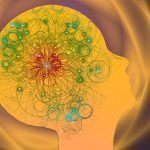Healing as a Spiritual Process
Robert B. Kellum, ND, PhD, MSOM/LAc, LMT
True healing, then, has to come not through substances alone and not even through relationship alone (although of course this is crucial too) but in addition through some kind of “initiation process,” in which the person being healed experiences himself or herself as on a journey of transformation that touches the spirit. This is the highest healing, which is a soul healing—a transmutation of life’s obstacles, traumas, and fears into greater desire for connection with the spiritual world. It is the great journey that has the potential to inspire all of us to action. It is the dimension that anthroposophy can engage and that allopathic and naturopathic medicines in their current forms alone cannot. And it is an engagement, not in the form of some kind of secular evangelism, but rather as a medicine that truly provides a sacred space for each patient within the medicine itself. As physicians, to offer this to our patients, we must be on this path ourselves, and we must recognize it not as some zealous religious mission but as simply an implicit part of our medicine, arising out of our understanding of the human condition. Our historical romance with the vital force is a doorway to this kind of practice.
As the vital force of past conceptions, it is the etheric body, as infused by the I-body and perpetually challenged by the astral body, that in tandem continually battles against the disintegration of the physical body. This use of the term etheric body is different from that of the “light ether” as sometimes described in physics. Here we are using it purely to express those outer cosmic forces that coalesce and give form to the physical body, somewhat in the way one might consider magnetic organizing forces that invest themselves in the formation of iron,28 but beyond this we are talking about it as a life-organizing force, a “life-body” as it were:
The etheric body, constitutes a second member of the human being…it has indeed a higher degree of reality than the physical…the etheric body completely permeates the physical, of which it may be regarded as a kind of architect. All the organs of the physical body are maintained in their form and structure by the currents and movements of the etheric body. Underlying the physical heart there is an etheric heart, underlying the physical brain an etheric brain, and so on. The etheric body is in effect a differentiated body like the physical, only far more complicated. And whereas in the physical body there are relatively separated parts, in the etheric all is in living interflow and movement.29
Here, then, is a vibrant living vital force, or etheric body, the attention to which we can incorporate consciously in our therapies. Here is an astral body, suffering the formation of our character, which we can compassionately connect with and mindfully help modulate as part of the human condition. And here is a warm body, to be brought into the room in the full consciousness of love as a therapeutic necessity. A complete transference thus takes place because we no longer are treating a body, an illness, or a physiological condition as described in a text, but rather the human condition, which we share in common with our patients.
To go here requires a cosmology in which all of us in the physical world are wounded healers. Being a wounded healer, whether you are a physician or a patient, means getting to a place of accepting yourself as capable because of your wound—not as something you have to bury to be competent or project onto others for your own liberation. That obviously is not healing. The wound is our gift. It gives us humility and compassion, and the wound of course is important in the challenge it gives us to overcome it and better fulfill our destiny, our unique contribution. This is what we want to help the patient to achieve. And sharing this with the patient, not so much solely on a personal level but as part of the science, potentially creates a resonant field between the physician and the patient in which the goal of healing can be shared. The resolution of the physical condition (the asthma, diabetes, or whatever it might be), while of course important, is ultimately the result of this higher healing, not the immediate goal itself. If our goal is to cure the diabetes or the asthma alone, we will more often than not miss this and fail in our effort. All of us have come here to learn important lessons, and in that sense, existentially, we all share a pathological condition by virtue of being here. Pain and illness are to a great extent the remedies of our existing in the material world. Each of us grasping that our “pathology” is part of a larger human condition is actually very freeing. It begins to put each of us more in control of our own healing. It begins to make the “ascent” out of illness suddenly a more achievable project.
Healing and Destiny
As physicians, we want to be able to point to our ability to help people heal. Ironically, the more we find ourselves as physicians trying to do this, the closer we move into the realm of politics, propaganda, and marketing and the further away we move from the realm of healing. We do not have control over the destiny of our patients. We can and must provide them with the very best and most comprehensive treatment plans to promote their healing, but ultimately the cure to be achieved is theirs, if and when they are ready. This is not to say that destiny is a predetermined and immutable fate. In the 2011 film The Iron Lady, Meryl Streep recounts a wonderful quote from Margaret Thatcher: “Watch your thoughts for they become words. Watch your words for they become actions. Watch your actions for they become…habits. Watch your habits, for they become your character. And watch your character, for it becomes your destiny! What we think we become.”
We as physicians can definitely have an important role in helping our patients fulfill the healing they have come here to do. But it can not be our primary goal. We can hold an indefatigable and ever-hopeful space for the healing to occur, and that is an important part of the medicine. In this vein, it is not necessarily important whether we or our patients are ever totally “free” of pathology. What is important is that a healing process is stimulated to occur. Along with the remedies we select for our patients, we also help infuse new thoughts, new words, new actions, and new habits, and out of this not only is a new present and future developed but also a going back and changing one’s past—revisiting and reexperiencing past events, traumas, and illnesses and bringing them to resolutions that we were unable to achieve previously. In conjunction with the supplements and homeopathic remedies, the implementing of these shifts moves us closer to living life in nurturing healing relationships with others, with more consciousness, more of an open heart, greater capacity for self-regulation, greater revelations about the mystery of who we are and the mystery of the world around us, and so on. And all this has the potential to bring joy—joy of being witnessed and affirmed and joy that is needed for healing as much as is struggle. The experience of joy is what makes everything else worth doing. If there is the potential for joy to arise out of it, a tremendous amount of discipline and struggle can be marshaled to heal and a tremendous amount of will able to be exerted in this, which otherwise would not arise.
In this approach, then, improvements in symptoms come as a result of healing of the self, in its unfolding interrelationships in the 4 bodies and in its rhythmic balance between forces of inflammation and forces of sclerosis. Achieving these balances allows for realizing the potential of a more creative, fulfilling, and meaningful life, out of which healing can occur. How much more wonderful to be living a meaningful productive life with an asthma condition “in healing” vs being hypothetically free of asthma and living in some still pathological drudgery. This connection with life and self-actualization is after all what the healing is for—an improved quality of life. When we are sick, getting good sleep, good nutrition, and good rhythm in life and using the right herbs, supplements, or homeopathic remedies that can help take on a central importance. As we heal, these elements do not necessarily lessen in value, but they do increasingly shift in our understanding of being but means to our goals, not ends in themselves. With the science that we currently have, too many of us as NDs are selling the wrong thing.
What Anthroposophy Is and What Anthroposophy Is Not
Anthroposophy Is Not a Theory
The methodological principles and ideas of anthroposophy have been with us for many centuries. They did not initiate with Rudolf Steiner per se, other than in his genius in bringing these ideas together into a systemic method. It also very much embraces many of the ideas of naturopathic forebearers such as Hippocrates, Paracelsus, and Hahnemann. In many ways, it has parallels with the tenets of Baconian scientific method (observation, hypothesis, and experimentation), as well as with ancient Chinese, Ayurvedic, Persian, and Greek knowledge systems. It accesses these systems empirically through a Goethean-based phenomenology, grasping the underlying gesture of something in nature not by blind inheritance from the past but by a careful observation of its morphology and its movement over time. As such, it is not averse to Western science. Indeed, it relies on empiricism in its combining of anthroposophic based hypotheses with scientific facts. However, it does not stop there, but rather transcendently recasts materialist understanding within a spiritually cognitive framework. Perception is extended by inner experiences that are connected with self-experience.30 Anthroposophically enhanced medicine, then, can be seen to draw on and expand the scope of Western science, informed by it without being limited by it. In addition, anthroposophy calls on the physician to continually develop greater faculties of objective spiritual perception as part of growing in the practice through an active meditative life. Steiner put it like this: “Anthroposophy should not be considered a theory or mere science, nor as knowledge in the ordinary sense. It is rather something that grows in our souls from mere knowledge and theory into immediate life, into an elixir of life. In this way, anthroposophy not only provides us with knowledge, but we receive forces that help us…. The more we experience anthroposophy as bringing to us strength, support and life renewing energies, the more do we understand it.”31
This process constitutes in itself a type of research, the results of which, as one develops in the work, can be understood and evaluated on the same basis as the results of natural science. Realizing the difficulty of achieving such spiritual vision, Steiner recommended open-mindedly exploring and rationally testing the results of such research, urging the following of a spiritual training to allow direct application of the methods he used with the achievement of comparable results. Indeed, some results of Steiner’s research have been investigated and supported by scientists working to further scientific observation in directions suggested by an anthroposophic approach.32 Anthroposophic schooling of thinking leads to the development of a nonsensory, or so-called supersensory consciousness, whereby the spiritual researcher brings the experiences of this realm into ideas, concepts, and expressive language in a form that people can understand who do not yet have the capacity to achieve the supersensory experiences necessary for individual research.
This is where anthroposophy faces its greatest contemporary criticism, for as Carlo Willmann points out, from the perspective of positivist science, anthroposophic methodology offers no possibility of being falsified except through its own procedures of spiritual investigation because no intersubjective validation is possible by conventional scientific methods. Yet, if a nonsensory, nonphysical, “spiritual” realm does exist, as research increasingly bears out, then really it is impossible to exclude the possibility of empirically grounded experiences of other supersensory content.33 In today’s world of increasingly overlapping and cross-validating explanations of quantum reality—such as Bohm’s “implicate order,” Sheldrake’s “morphic resonance,” Heisenberg-inspired “string theory,” Talbot’s “holographic universe,” and so on—the supersensory realm indicated by Steiner34 becomes increasingly less far-fetched and increasingly more useful in the explanation of reality. Steiner sought to promote an accessible, spiritual capability that would free the individual from any external authority, allowing us to draw our knowledge directly from the spirit world on our own in a constant developmental process of unlearning and relearning, increasingly grounding rational thought within ourselves. This is a process of self-organization and emergence precisely in accord with the implicate order and other such contemporary systems of understanding reality.
Anthroposophy Can Promote the Further Development of Traditional Chinese Medicine and Other Ancient Systems of Medical Knowledge
Feeling a spiritual “underdevelopment” in naturopathy in its current form, many NDs have been drawn “supplementally” to Traditional Chinese Medicine, Ayurvedic medicine, or other native medicines for the many spiritual connections inherent in their ancient systems of knowledge. But the constructions of these systems of medicine often come to us from a clairvoyant past to which we have lost a bodily connection. While they can offer us many effective techniques, the understanding behind them—as, for example, in the mechanisms of action for specific acupuncture points—can often be obscure, even as they are there. From an anthroposophic perspective, it is our consciousness of a therapy that gives it its power. Without this, students, then, can at times become overburdened by ancestral dogma rather than developing the skills to discern their own truths and truly live the medicine. As a spiritual science compatible with ancient medical systems,35 anthroposophy can help renew conscious linkages in these medicines, bringing them to a greater integrative wholeness than ever and reviving the richness of their applicability today.
Anthroposophy Is Not a Religion
Anthroposophy has no canonical dogma and no priests, pastors, ministers, and so forth, as well as no formal “church” organization, no religious sacraments to practice, no claim to lead to salvation, and no “one” being (spiritual or otherwise) whose guidance is looked to as beyond question. Anyone who has delved into anthroposophy with any depth soon becomes aware of the importance that religious figures such as Zarathustra, Buddha, Moses, Christ, and others have in understanding spiritual science, as well as the many corollaries that Steiner in particular draws with Christian ideas. Yet, anthroposophy supports all religion without interfering with religious practice. Members of its society engage in the practice of Judaism, Christianity, Islam, Shinto, Buddhism, and many other faiths. Others of its members are not connected to a particular religious faith at all. Essentially, anthroposophy honors each member’s own faith and the moral injunctions of that faith.36 If anthroposophy has any tenets, they might be healthy skepticism, open-mindedness, positivity, equanimity, and developing the capacity for clear thought. With more than 6000 lectures and 40 books to his name, Steiner has given us a commanding body of knowledge on how to move this forward.
With his background being initially in academia, Steiner’s years as curator to Goethe’s writings placed him in a unique position to develop Goethe’s ideas further (the basis of his doctoral dissertation). In his book The Philosophy of Freedom, Steiner uses these ideas to transcend the solipsism of Kant through outlining the path of a philosophically grounded spiritual development. He had a brief sojourn with the theosophical movement shortly thereafter but rejected it precisely because of its dogmatic cultism and reliance on mediumship and other atavistic methods. Steiner went on instead to develop anthroposophy as an empirically grounded and evolutionist spiritual science. The level of holographic interconnectivity and integrity Steiner fostered in this tradition also pales any connection with Scientology that some have naively suggested. While L. Ron Hubbard definitely incorporates some of Steiner’s ideas, as well as those of the Vedanta and other great writings, he mixes in such a blend of religion, business promotion, UFO salvation, indoctrination of members who are “cleared,” secret activities in the interest of control, and so on, as to remove even the slightest connection with the spiritual science of Steiner.37 Anthroposophy has no secret society, no UFO religion, no contracts to sign, for example; its primary concern is that each individual develops in freedom.
Embracing an anthroposophic method requires no bowing down to Steiner or wallowing in the dogma of a Helen Blavatsky or an L. Ron Hubbard any more than embracing naturopathic medicine might involve bowing down to Priessnitz or Father Kneipp. We need to move beyond such ungrounded fears.
To be continued in forthcoming NDNR issues.
Thanks to friends and colleagues Dr Andrew
Elliott, Dr Alicia Landman-Reiner,
Dr Dick Thom, Dr Paul Kalnins, Dr Heiner Fruehauf, Dr David Bartelt, Dr Philip Incao, and Donna Patterson, LMT, for their helpful feedback in editing and revising this article. Final responsibility for the ideas within it are solely the author’s.
Dr Robert Kellum is a board-licensed ND and practitioner of Traditional Chinese Medicine, seeing patients in Portland, Oregon. With other interested colleagues, he is spearheading the development of the Society for Physicians of Anthroposophic Naturopathic Medicine (SPAN-MED), with the intent of its being part of an umbrella group within the Anthroposophic Association of Medical Therapies in America (AAMTA), for developing the cross-disciplinary seeds of an integrated spiritual science through the drawing together of NDs and like-minded colleagues as a conscious force in their professions. For more information, you can contact Bob at [email protected].
References
See the work of Aaron Saxton-Burr.
Steiner R. Occult Science: An Outline. Chapter II: The nature of humanity.
Bockemuhl J. A Guide to Understanding Healing Plants. Chestnut Ridge, NY: Mercury Press; 2010:9.
Steiner R. Facing karma: a lecture by Rudolf Steiner; February 8, 1912; Vienna, Austria. GA 130. http://wn.rsarchive.org/Lectures/FacKar_index.html. Accessed September 22, 2012.
Wikipedia. Anthroposophy. http://en.wikipedia.org/wiki/Anthroposophy. Accessed September 22, 2012. See, for example, the works of Lilly Kolisko, Wilhelm Pelikan, Rudolph Hauschka, Ehrenfried Pfeiffer, Theodore Schwenk, Dennis Klocek, Ross Rentea, and others. There is a real need for a furtherance of this research today. For Steiner, the Goetheanum was the “Free University of Spiritual Science,” built to provide opportunities for students to follow his indications and engage in intense scientific research activity of their own.
Wikipedia. Anthroposophy. http://en.wikipedia.org/wiki/Anthroposophy. Accessed September 22, 2012.
Steiner R. Truth and Knowledge: Introduction to the Philosophy of Freedom [PhD dissertation]. GA 3. 1892. http://wn.rsarchive.org/Books/GA003/English/GC1981/GA003_index.html. Accessed September 22, 2012.
Stedall J. The Challenge of Rudolf Steiner [movie]. 2011. See Dennis Klocek’s introduction. “Steiner brought the best elements from the ancient traditions together and showed how they could be synthesized in a scientific context; that’s why his work is called Spiritual Science.”
Waldorf Answers. Is anthroposophy a religion? http://www.waldorfanswers.com/NotReligion1.htm. Accessed September 22, 2012.
Scientology vs anthroposophy (Lafayette Ron Hubbard vs. Rudolf Steiner). http://uncletaz.com/hubbstein.html. Accessed September 22, 2012.





